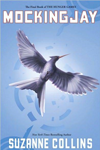
Search
Categories
Famous Authors
Top Selling Books

Book Home ![]() Books Information
Books Information ![]() Comparison with printed books
Comparison with printed books
Comparison with printed books
Ebook advantages
Text can be searched, except when represented in the form of
images.
Take up little space.
Hundreds (or thousands) may be carried together on one device.
Approximately 500 average ebooks can be stored on one CD (equivalent
to several shelves' worth of print books)
Ebooks may be read in low light or even total darkness, with a back-lit
device.
Type size and type face may be adjusted. However, enlarging e.g. a PDF
document magnifies the text but preserves the original layout and spacing;
a practical limit on zooming follows from the requirement to keep a
text column within the width of the screen (otherwise horizontal scrolling
would be needed during and after reading each line, which would be very
cumbersome). However, tagged PDFs can be reflowed in Acrobat 6 and 7,
eliminating the horizontal-scrolling problem in zoomed PDFs. For more
on zooming in, see Electronic maps.
Can be used with text-to-speech software.
Readily reformatted for independent platforms.
Instantly copied
When a backup is kept in a remote place, cannot be lost by fire, etc.
Once distributed, elimination is hard to impossible.
Distributed at low cost.
Simultaneously share book (if networked).
Errors may be easily corrected with downloadable lists of errata or
simply with corrected text. (This can also be an advantage for printed
books, in different circumstances.)
At the moment, ebooks are commonly published by independent publishing
houses, which can mean greater editorial and authorial freedom and more
room for experimentation.
An inexpensive format for works that require color.
An excellent choice of format for works that benefit from search and
cross-reference capabilities, such as dictionaries, reference works,
certain kinds of textbooks.
Print book advantages
Less eye strain over extended reading time
If small, very portable.
Usable in adverse environmental conditions.
Robust and durable.
Readable when severely damaged.
Requires no power source, and no alternative reading device like a PC
or a palmtop.
Errors are "forever"; this unchangeability sometimes adds
to its value.
Has more value as "collector's items," e.g., first editions
At the moment, print books are primarily published by established houses
including numerous international conglomerates, which can result in
greater funds available for promotion of a title.
Ebook disadvantages
From the user's point of view: Can be incompatible with new
or replacement hardware or software
Require care in handling and storage of the files, to avoid damage
or loss
From the publisher/author's point of view: Can in some cases be hacked,
or disseminated without approval from the author or publisher (some
formats are more susceptible to this than others)
Not normally a good format choice for works that have extensive and/or
large illustrations, such as works in art history, photography, large
maps, etc.
Print book disadvantages
From the user's point of view: Can be priced in a way that inhibits
availability
From the user's and author's point of view: Can be put out of print
and made unavailable to readers
From the author's point of view: Can be difficult to get a publisher
to amend errata
Can be an awkward format for reference works or works that have many
internal crossreferences.
An expensive format for works that require color, since color printing
commonly requires several passes of paper through the press (one pass
per color).